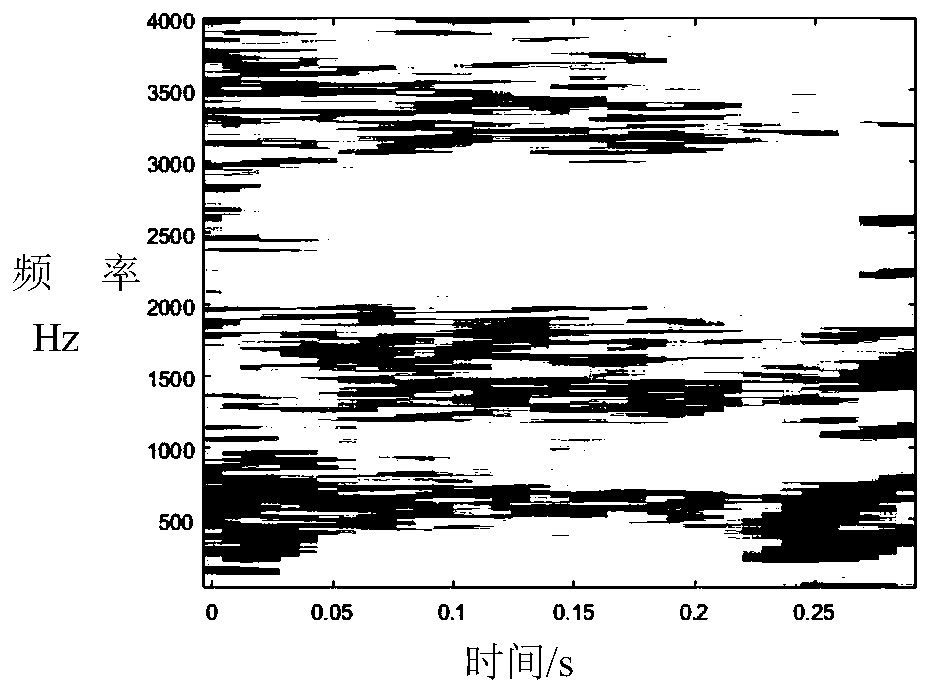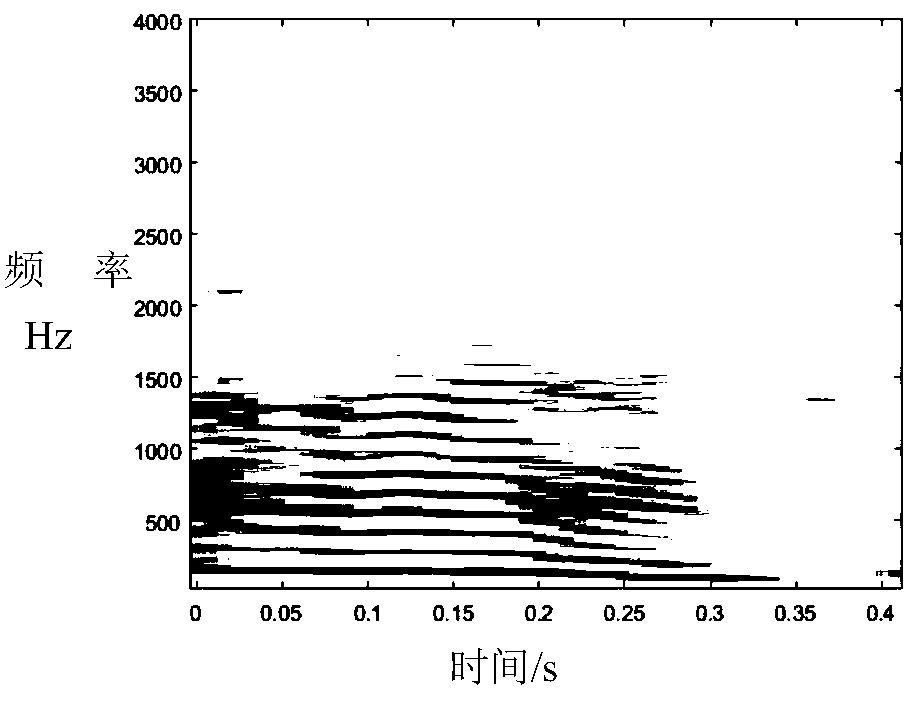Linear classification algorithm for true and false cough sounds of patients with cervical spinal cord injury medium and equipment
A spinal cord injury and linear classification technology, applied in speech analysis, medical science, instruments, etc., can solve problems such as evaluation, difficulty in establishing a true and false cough recognition model, and limited number of cough sound samples
- Summary
- Abstract
- Description
- Claims
- Application Information
AI Technical Summary
Problems solved by technology
Method used
Image
Examples
Embodiment 1
[0050] This embodiment is a linear classification algorithm for true and false cough sounds of patients with cervical spinal cord injury. A number of unvoiced and voiced samples are obtained, and the initial sequence of the unvoiced and voiced samples is intercepted and filtered; the zero-crossing rate and the maximum Autocorrelation coefficient; establish a linear classifier based on the zero-crossing rate and the maximum autocorrelation coefficient, and train the linear classifier with unvoiced samples and voiced samples as sample sets; identify the cervical spinal cord injury patients through the trained linear classifier True cough and shout-type pseudo-cough.
[0051] Its workflow is as follows figure 1 shown, including the following steps:
[0052] The first step, with f s Collect m unvoiced sound samples and m voiced sound samples for the sampling frequency, and intercept each sample with a length of N and a duration of The sequence of the unvoiced sequence x i (k)...
Embodiment 2
[0102] In this embodiment, a linear classification algorithm for true and false cough sounds of patients with cervical spinal cord injury, its workflow is as follows: Figure 5 As shown, the difference with Embodiment 1 is that in this embodiment, in the first step, f s Collect m unvoiced sound samples and m voiced sound samples for the sampling frequency, respectively perform endpoint detection processing on each unvoiced sound sample and voiced sound sample, and then intercept the length N from the initial moment after the endpoint detection, and the duration is The sequence of the unvoiced sequence x i (k) and voiced sequence y i (k), wherein, i=1,2,...,m, k=1,2,...,N, and m, N are positive integers;
[0103] Ninth step, with f s Obtain the sample to be tested for the sampling frequency, perform endpoint detection processing on the sample to be tested, and then intercept the length of N from the initial moment after the endpoint detection of the sample to be tested, and...
Embodiment 3
[0106] This embodiment is a storage medium, wherein the storage medium stores a computer program, and when the computer program is executed by a processor, the processor executes the cervical spinal cord injury patient's true and false described in Embodiment 1 or Embodiment 2. A linear classification algorithm for cough sounds.
PUM
 Login to View More
Login to View More Abstract
Description
Claims
Application Information
 Login to View More
Login to View More - R&D
- Intellectual Property
- Life Sciences
- Materials
- Tech Scout
- Unparalleled Data Quality
- Higher Quality Content
- 60% Fewer Hallucinations
Browse by: Latest US Patents, China's latest patents, Technical Efficacy Thesaurus, Application Domain, Technology Topic, Popular Technical Reports.
© 2025 PatSnap. All rights reserved.Legal|Privacy policy|Modern Slavery Act Transparency Statement|Sitemap|About US| Contact US: help@patsnap.com



